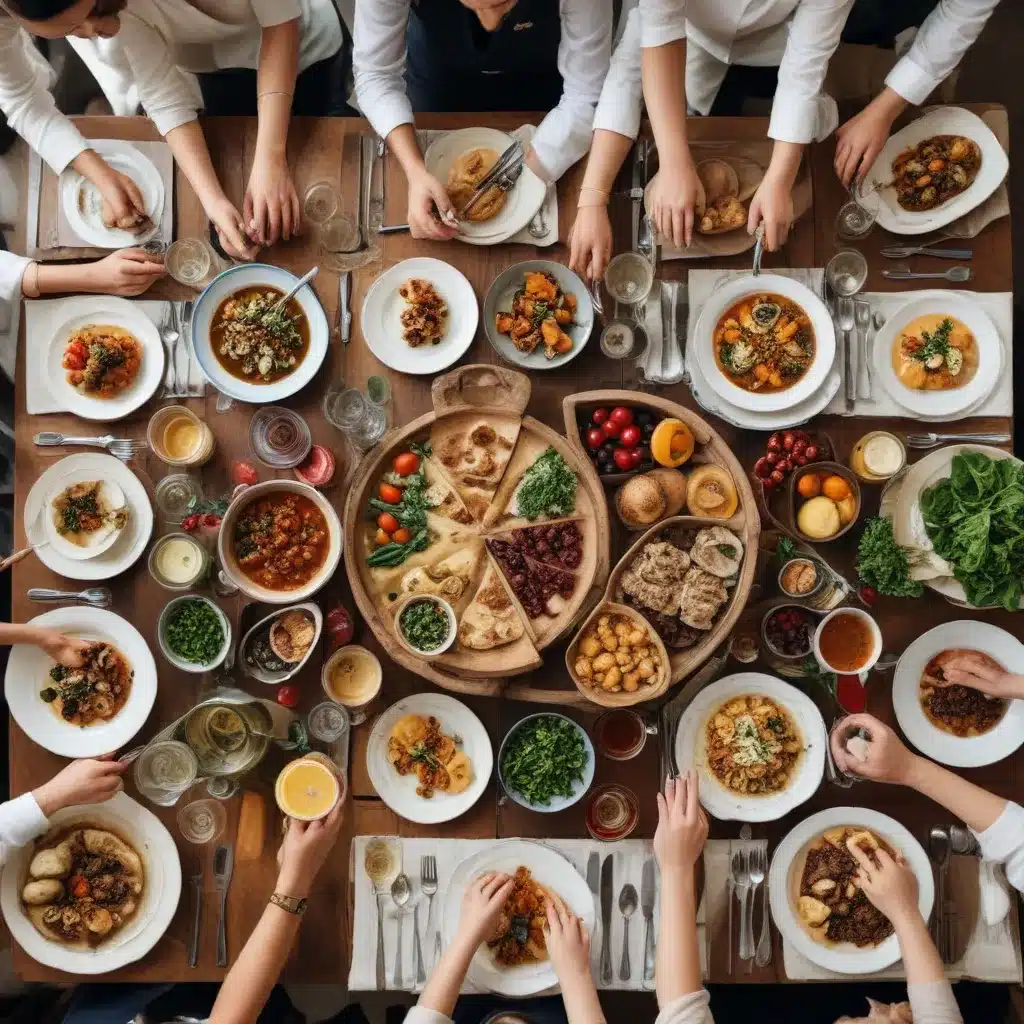
The Art of Breaking Bread: Food as a Diplomatic Tool
In the increasingly interconnected world we live in, the power of cuisine to bring people together and foster cross-cultural understanding has become more important than ever. As seasoned culinary professionals, we have the unique opportunity to harness the universal language of food and use it as an instrument of diplomacy, breaking down barriers and forging meaningful connections between nations and communities.
The concept of “culinary diplomacy” has gained traction in recent years, recognizing the profound impact a shared meal can have in shaping perceptions, building relationships, and facilitating productive dialogues. Unlike traditional diplomacy, which often occurs in formal, impersonal settings, culinary diplomacy takes place at the table, where people can engage with one another on a more personal and emotional level.
By showcasing the rich diversity of our culinary traditions, we have the power to share the stories, histories, and values that shape the unique identities of our respective cultures. As the U.S. State Department’s Diplomatic Culinary Partnership initiative suggests, “By showcasing the best of American cuisine and creativity, we can show our guests a bit about ourselves. Likewise, by incorporating elements of our visitor’s culture, we can demonstrate respect and a desire to connect and engage.”
Chefs as Citizen Diplomats: The American Culinary Corps
At the heart of this culinary diplomacy initiative is the newly established American Culinary Corps, a network of over 80 of the nation’s most talented and diverse chefs, who will serve as cultural ambassadors, traveling the world and sharing their culinary expertise. These esteemed chefs, representing the rich tapestry of American cuisine, will participate in official government programs, using food as a foundation for public diplomacy.
As Secretary of State Antony Blinken eloquently stated, “If this were a quickfire challenge, it would end with Padma Lakshmi telling me to ‘please pack my knives and go.’” The members of the American Culinary Corps are undoubtedly the crème de la crème, hailing from diverse backgrounds and bringing a wealth of experience, innovation, and a deep commitment to their craft.
From Christine Ha, the pioneering blind chef breaking down barriers as a woman of color, to Sean Sherman, the visionary preserving and revitalizing indigenous ingredients and techniques, these culinary ambassadors will have the opportunity to showcase their talents and share their unique stories on a global stage.
Cultivating Cross-Cultural Understanding Through Cuisine
As the U.S. Public Diplomacy blog suggests, culinary diplomacy is distinct from the broader concept of gastrodiplomacy, which focuses on communicating culture through food to the general public. Culinary diplomacy, on the other hand, is a more targeted approach, utilizing cuisine as a medium to enhance formal diplomatic procedures and strengthen bilateral relationships.
By incorporating elements of the visiting dignitaries’ culinary traditions into official functions, such as state dinners and embassy receptions, we demonstrate a genuine appreciation and respect for their culture. This reciprocal exchange not only fosters a sense of cultural understanding but also creates an environment conducive to open dialogue and collaboration.
The cultural exchange component of the Diplomatic Culinary Partnership program is particularly noteworthy. Through the International Visitors Leadership Program, young chefs from 25 countries will have the opportunity to tour the United States, meet their American counterparts, and learn about sustainable farming practices. This immersive experience allows them to gain a deeper understanding of American cuisine, while also sharing their own culinary traditions, ultimately cultivating a rich tapestry of global culinary exchange.
Expanding the Reach of Culinary Diplomacy
While the Diplomatic Culinary Partnership initiative is a commendable step forward, there is vast potential to further expand the reach and impact of culinary diplomacy. As the U.S. Public Diplomacy blog suggests, incorporating state-level support and branding could significantly strengthen the program’s ability to showcase the diverse culinary landscapes that exist across the United States.
Imagine the opportunity to highlight the distinctive barbecue styles of Texas, Kansas City, and the Carolinas, or to showcase the subtle flavors of the Pacific Northwest. By tapping into the international branding and cultural exchange efforts of individual states, the Diplomatic Culinary Partnership could truly become a reflection of the rich culinary mosaic that makes up the fabric of America.
Furthermore, as global issues such as climate change, sustainability, and food security come to the forefront, culinary diplomacy can serve as a powerful platform for cross-cultural dialogue and collaborative problem-solving. As Meridian’s Culinary Crossroads event highlighted, “From farm to table, stakeholders are called to interrogate their practices by sourcing locally and reducing their carbon footprint.” By engaging with culinary professionals from around the world, we can foster a greater understanding of the interconnectedness of our food systems and work together to find sustainable solutions.
Conclusion: Embracing the Power of the Culinary Arts
As we embark on this new era of culinary diplomacy, it is clear that the power of food to bring people together and cultivate cross-cultural understanding is more vital than ever. By leveraging the expertise and passion of our nation’s finest chefs, the Diplomatic Culinary Partnership has the potential to become a transformative force, bridging divides and forging lasting connections across the globe.
Whether it’s sharing a meal with a foreign dignitary, immersing ourselves in the culinary traditions of a distant land, or collaborating on sustainable food systems, the culinary arts have the unique ability to transcend language barriers and foster meaningful dialogue. As Julia Child once said, “People who love to eat are always the best people.” Let us embrace this sentiment and harness the power of the culinary arts to create a more connected, empathetic, and prosperous world.


